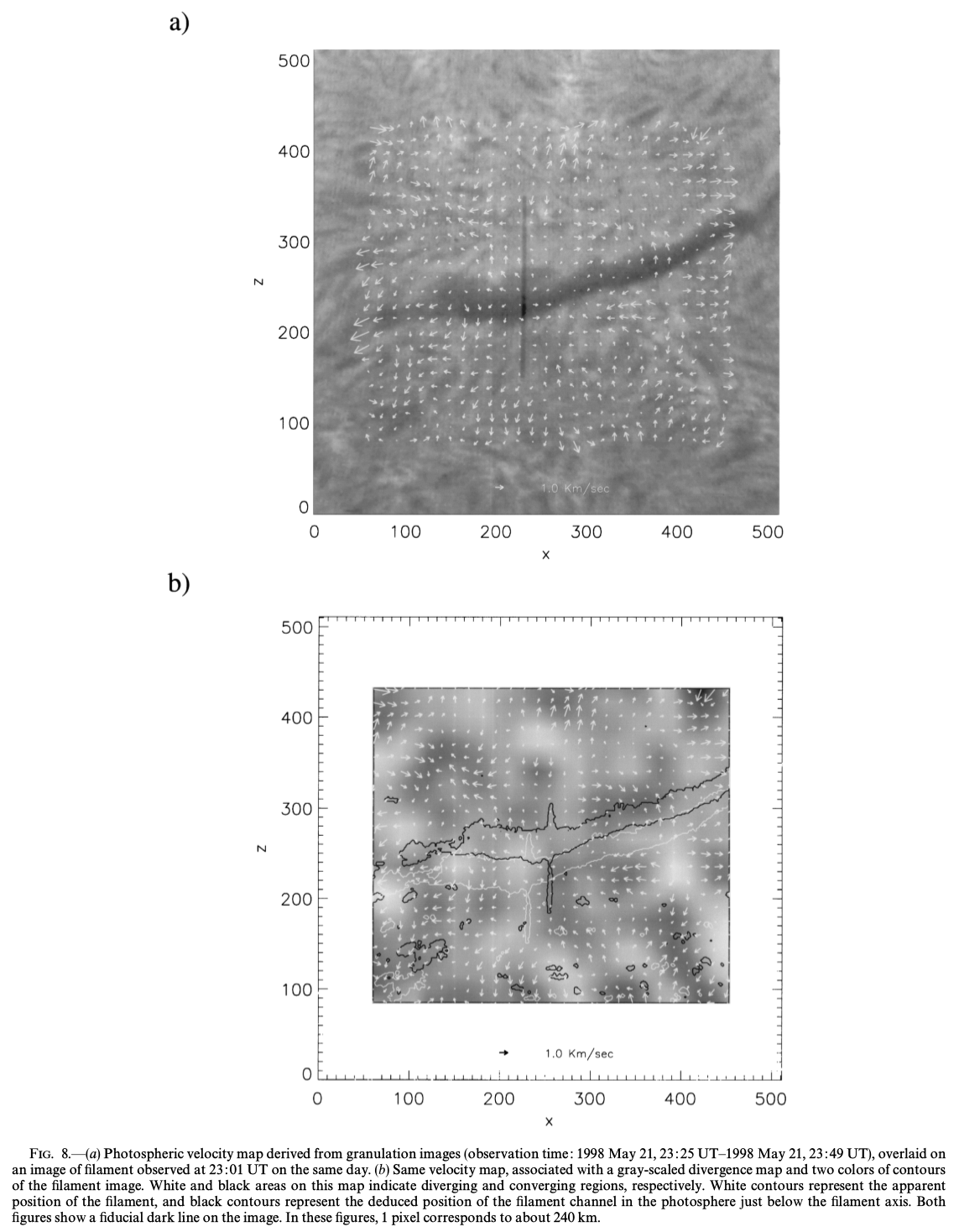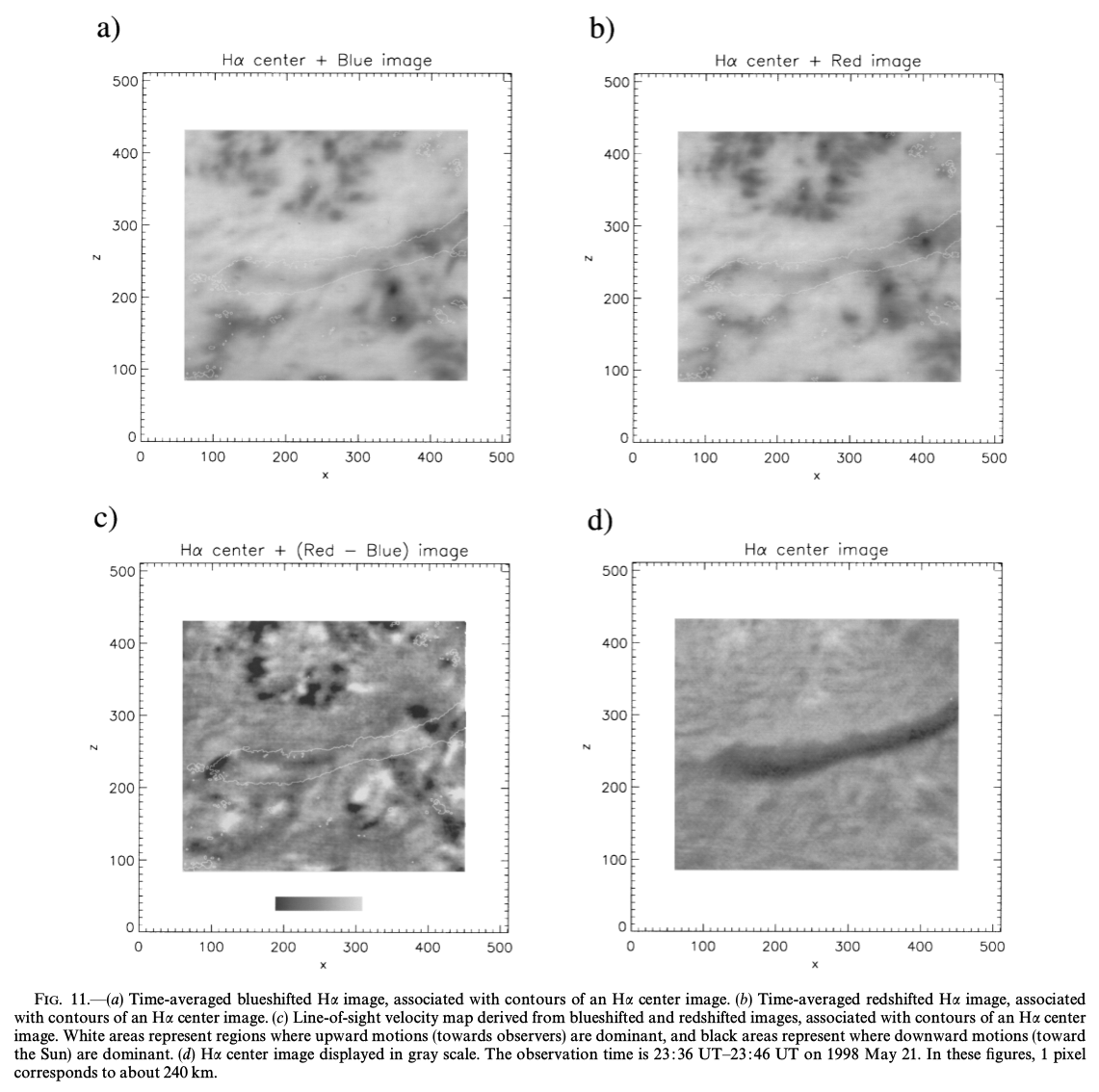We investigated how photospheric gas moved below a dark filament and chromospheric gas moved inside the filament. We traced granules by means of a local correlation tracking (LCT) method to obtain a time-series of photospheric transverse velocity-field maps, while inside the filament we obtained a time-series of chromospheric line-of-sight velocity-field maps by subtracting blue-shifted Hα images from redshifted Hα images. We found that a typical value of the photospheric transverse velocity was 1 km/s, and a large-scale pattern observed in a time-series of divergence maps of the transverse velocity remained for several hours. We also found that photospheric motions around a filament channel forming below the dark filament were rather random in space and changeable in time. We discussed how these motions could be related to the activity of the filament, including the so-called pivot point. As for the chromospheric gas motion inside the filament, there was an upflow at one side of the filament and a downflow at the other, which implies that the chromospheric gas had a helical motion inside the filament.
Reference
Magara, T., & Kitai, R. 1999, ApJ, 524, 469




